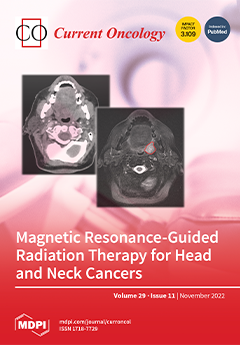Objective: To analyze the perioperative outcomes of neoadjuvant hormone therapy (NHT) before laparoscopic and robot-assisted surgery for localized high-risk prostate cancer in a Chinese cohort. Methods: The clinical data of 385 patients with localized high-risk prostate cancer who underwent radical prostatectomy (RP) in our hospital from January 2019 to June 2021 were analyzed retrospectively, including 168 patients with preoperative NHT and 217 patients with simple surgery. Clinical characteristics were compared in the above two groups, the laparoscopic RP (LRP) cohort (n = 234) and the robot-assisted laparoscopic radical prostatectomy (RALP) cohort (n = 151), respectively. Results: In the overall cohort, compared with the control group, the NHT group had a shorter operative time, less blood loss, a lower positive surgical margin rate, and a higher proportion of Gleason score (GS) downgrading after the operation (
p < 0.05). However, there was no significant difference in hospitalization time, biochemical recurrence, urine leakage, urinary continence, or prostate-specific antigen (PSA) progression-free survival (
p > 0.05). In the LRP cohort, it was found that the NHT group also had shorter operative time, less blood loss, lower positive surgical margin rate, a higher proportion of GS downgrading after the operation, and faster recovery of urinary control than the control group (
p < 0.05). There was no marked difference in hospitalization time, biochemical recurrence, urinary leakage, or PSA progression-free survival. However, in the RALP cohort, the NHT group had a significant difference in the GS downgrading after the operation compared with the control group (
p < 0.05). In the overall cohort, multiple analyses showed that initial PSA level, GS at biopsy, clinical T stage, lymph node invasion, use of NHT, and surgical methods were significantly associated with positive surgical margin (
p < 0.05) while NHT did not account for biochemical recurrence (
p > 0.05). Conclusions: NHT can lower the difficulty of surgery, reduce positive surgical margin rate, and help recovery in short-term urinary control in patients with high-risk prostate cancer after LRP. However, we do not have evidence on the benefit of NHT in high-risk PCa patients treated with RALP. For these patients, surgery can be performed as early as possible.
Full article






